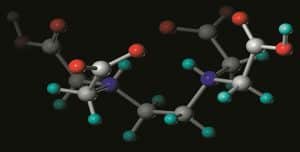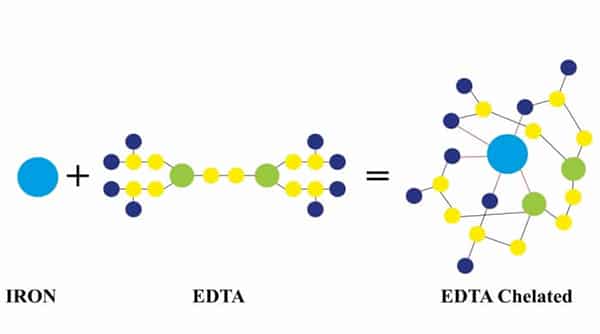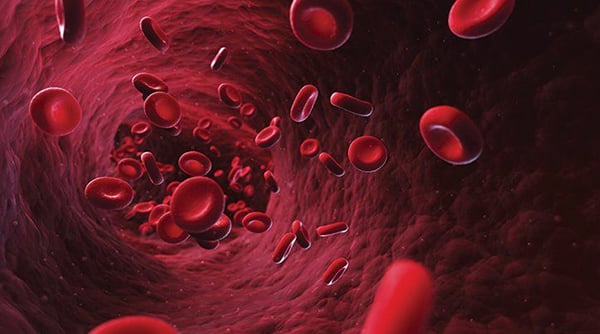Ethylenediamine tetraacetic acid, abbreviated as EDTA for short, was first discovered in 1935 by a man named Ferdinand Münz. This compound is a colorless, water-soluble amino polycarboxylic acid with the chemical formula C10H16N2O8. EDTA is able to bind to metal cations and act as a chelating agent. Due to this property, it is used in the separation or purification of solutions.
What is EDTA Chelated?
Due to its good ability to bond with metal ions, EDTA is mainly used to remove these ions from the solution and change the properties of ions. Therefore, it is a good chelating agent. The sum of metal ions and the Chelate agent is called “Chelating”. EDTA iron chelate is one of the most famous chelates of this substance.
Types of EDTA:
Disodium and tetrasodium are by-products of the EDTA synthesis process and are considered sodium salts of this compound. The main difference between the two compounds is that EDTA 2Na has a pH of less than 7, while EDTA 4Na has a pH of more than 7.
EDTA Uses:
EDTA chelating agent is widely used in the chemical industry and 80% of its major uses are in the paper and pulp industries, detergents, agrochemicals, and water treatment.
Reduce Water Hardness:
Calcium and magnesium ions in water make it hard. Deposition of these ions in the body or in various equipment causes many problems, one of the ways to eliminate this difficulty is to use EDTA. With the help of this substance, ions such as calcium and magnesium are inactivated and water becomes soft. In addition, the above material will prevent corrosion of equipment by complexing impure metal ions in water.
Treatment of Anemia:
About 1.6 billion people worldwide suffer from iron deficiency, according to the World Health Organization. The use of this iron-containing compound in foods can effectively eliminate this iron deficiency, especially in developing countries.
Pharmaceutical Industry:
EDTA is used to treat lead poisoning and brain damage, radioactive metal poisonings such as thorium, uranium, and strontium, to remove copper in patients with “Wilson’s disease” and to reduce the amount of calcium in the body of people with high calcium.
In addition to the above, this substance is used to treat blood and venous problems such as irregular heartbeat, chest pain, high blood pressure, high cholesterol, stroke, and circulatory problems.
Water and Wastewater Treatment:
Water and sewage pollution from industrial and domestic activities has become a serious problem. Advances in industries such as mining, steel, and metal plating have allowed water contaminated with harmful metals to enter nature.
These dangerous elements enter the human food chain through direct drinking of polluted water or through plants and animals, causing irreversible effects on the human body. For this reason, the use of chelating compounds, led by EDTA, has received more and more attention. EDTA can absorb and neutralize metal ions such as lead, cadmium, mercury, and cobalt and then remove them from the water by methods such as reverse osmosis and returning the purified and clean water to nature or the cycle of use.
Cosmetics:
This combination is used in the production of care products and various skin and hair cleansers such as soap and shampoo, as well as a variety of hair dyes and oxidants. The purpose of using this combination is to increase the effectiveness and stability of most skin and hair care products. In fact, the presence of this substance in cosmetics prevents them from spoiling prematurely and completely stops the growth of fungi and other microorganisms.
Dentistry:
EDTA softens tissues and detoxifies the canal walls by forming chelates, so it helps to remove tooth roots during denervation and is also effective in disinfecting teeth due to its antibacterial properties.
Agriculture:
The use of EDTA in the form of fertilizer for plants increases the growth of plants and as a protective fat strengthens their growth and rooting.
Food Industry:
EDTA has been used as an additive in many processed foods. This substance prevents the reaction of metals in food and prevents their oxidation, change in color, and taste.
Conclusion:
As mentioned above, since this material has many uses, care must be taken in purchasing it so that the purchased material is of very high quality. Shanghai Chemex, by offering quality products, has created the assurance in the customer’s mind that they can buy the original material they need at a reasonable price.










4 Responses
Does EDTA lower cholesterol?
A 1953 study by one of the authors reported that ethylene diamine tetraacetic acid (EDTA) is a build-up of cholesterol accumulated in the liver.
What is the role of EDTA in detergents?
In detergents and soaps, complexing agents such as EDTA are used for reducing the hardness of water by the removal of undesired metal ions.